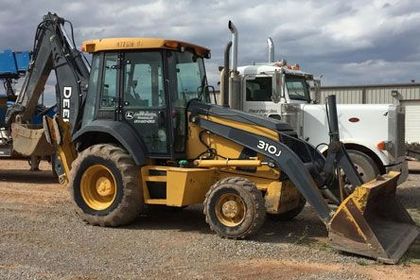Everything About Oil Field Equipment and Pipeline Equipment: Trick Insights and Necessary Details
Oil field equipment and pipeline systems play a pivotal role in the oil and gas market. They are crucial for the efficient removal and transportation of hydrocarbons. Trick parts, such as piercing rigs and tank, straight impact functional success. Developments in innovation pledge to improve safety and effectiveness. Understanding these elements is important for any person associated with or interested in this complicated field, as it sets the phase for deeper expedition of industry methods.

Overview of Oil Field Equipment
As the need for oil remains to expand, recognizing the devices utilized in oil areas becomes progressively crucial. Oil field equipment encompasses a large array of equipment and devices important for expedition, removal, and processing. Trick elements consist of piercing rigs, which are crucial for getting to oil reservoirs, and manufacturing devices, such as separators and pumps, that facilitate the extraction procedure. Superior rentals squeeze tools. Additionally, tank play a substantial role in holding unrefined oil prior to transport. Safety tools, consisting of blowout preventers and stress assesses, ensures operational safety and security and performance. Each item of equipment functions cohesively to optimize manufacturing and maintain effective workflow. Experience with this devices is very important for professionals in the industry to ensure effective operations and adherence to safety and security criteria
Types of Drilling Rigs and Their Applications
Drilling rigs function as the backbone of oil removal operations, with different types made for particular geological conditions and operational demands. The most common kinds consist of rotating exploration rigs, which use a turning drill bit to permeate the earth, and cable television tool rigs, understood for their percussion exploration approach. For overseas procedures, jack-up rigs and semi-submersible rigs offer security and assistance in marine settings. Furthermore, directional boring rigs make it possible for drivers to pierce at angles, getting to down payments that are not vertically accessible. Each gear type has distinct advantages, enhancing efficiency and security based on the boring setting. Selecting the ideal rig is important for optimizing source extraction while minimizing environmental impact and operational expenses.

Important Pipeline Equipment and Their Functions
Pipeline facilities is important for the transport of oil and gas from removal websites to processing centers and end-users. Numerous crucial tools parts promote this procedure. Pipelines themselves work as the main conduits, developed to endure high pressure and harsh compounds. Pump terminals are critical for preserving flow by enhancing pressure along the pipeline. Shutoffs play an important duty in regulating flow and separating sections for upkeep. Furthermore, installations and ports ensure safe and secure joints between pipe areas. Keeping track of systems, consisting of flow meters and pressure sensing units, are essential for identifying leakages and maximizing circulation rates. Ultimately, pigging equipment is employed for upkeep and cleansing, safeguarding pipeline stability and effectiveness. With each other, these elements form the foundation of a trusted pipeline system.
Innovations and Technologies in Oil and Gas Equipment

Safety And Security and Upkeep Practices in the Oil Market
While the oil sector has made substantial strides in innovation and performance, the relevance of robust security and maintenance practices can not be overstated. Efficient safety and security protocols are important to secure employees and the atmosphere, reducing the danger of crashes and spills. Routine examinations and maintenance of tools assistance identify prospective problems before they rise, guaranteeing functional honesty. Educating programs for staff members are crucial, stressing the importance of safety and security awareness and emergency situation response treatments. Furthermore, adherence to industry laws and standards cultivates a society of security. Applying innovative tracking modern technologies can further boost upkeep practices, enabling real-time evaluations of devices conditions. Ultimately, focusing on safety and security and upkeep is essential to the sustainability and success of the oil industry.
Regularly Asked Inquiries
What Are the Environmental Effects of Oil Field Equipment?
The environmental influences of oil field equipment consist of habitat devastation, water contamination, and air contamination (Superior rentals squeeze tools). In addition, equipment breakdown can result in spills, negatively influencing wild animals reference and communities, highlighting the demand for strict regulations and tracking
Just How Is Oil Field Equipment Transferred to Remote Locations?
Delivering oil field equipment to remote locations frequently includes customized lorries, helicopters, or barges. Logistics business coordinate paths, making sure equipment shows up safely and efficiently, considering surface and access to reduce delays and maximize efficiency.
What Regulative Standards Govern Oil Field Equipment?
Regulatory standards controling oil field equipment mostly include safety and security, environmental management, and operational efficiency standards. Agencies such as OSHA and EPA implement these laws to assure risk-free methods and reduce environmental effect in oil extraction operations.
What Abilities Are Needed to Operate Oil Area Equipment?

Exactly How Do Oil Costs Influence Equipment Demand and Use?
Oil costs considerably influence tools demand and usage. Higher rates typically lead to increased expedition and manufacturing activities, driving demand for machinery. Alternatively, reduced prices might result Read Full Article in lowered operations and reduced requirement for equipment.